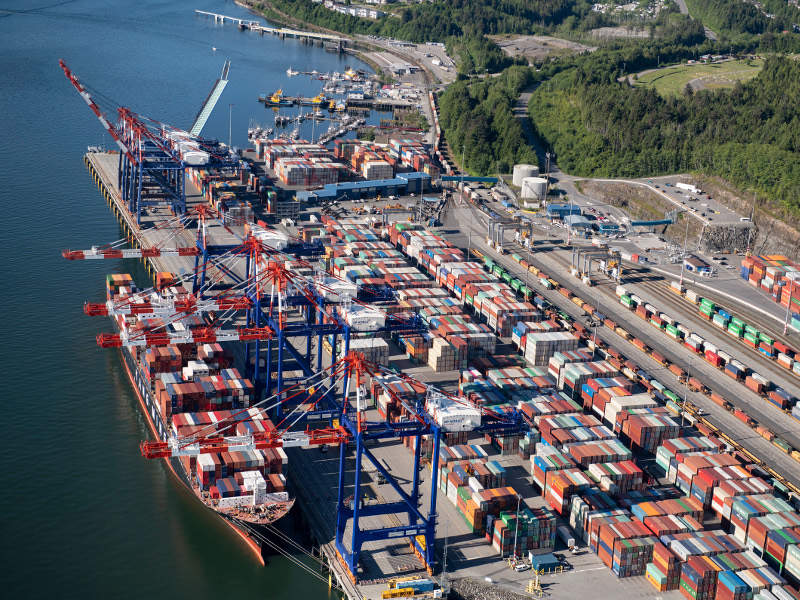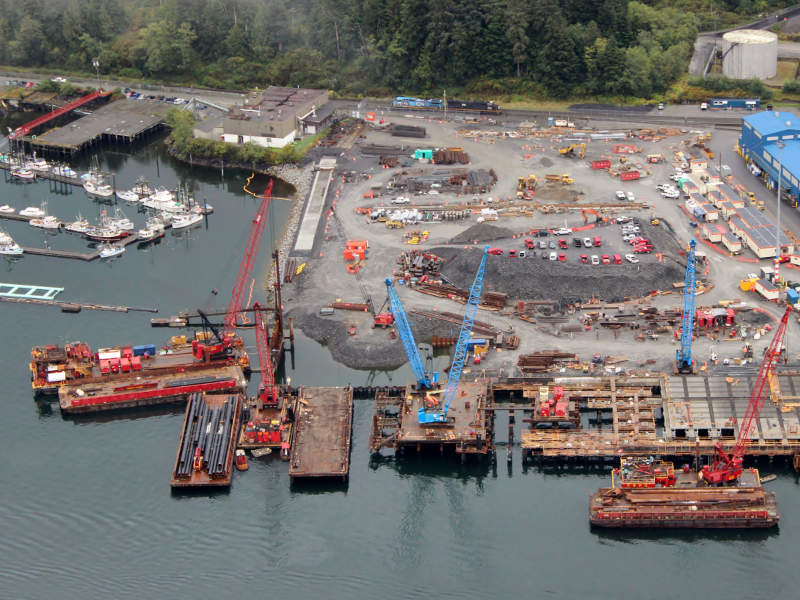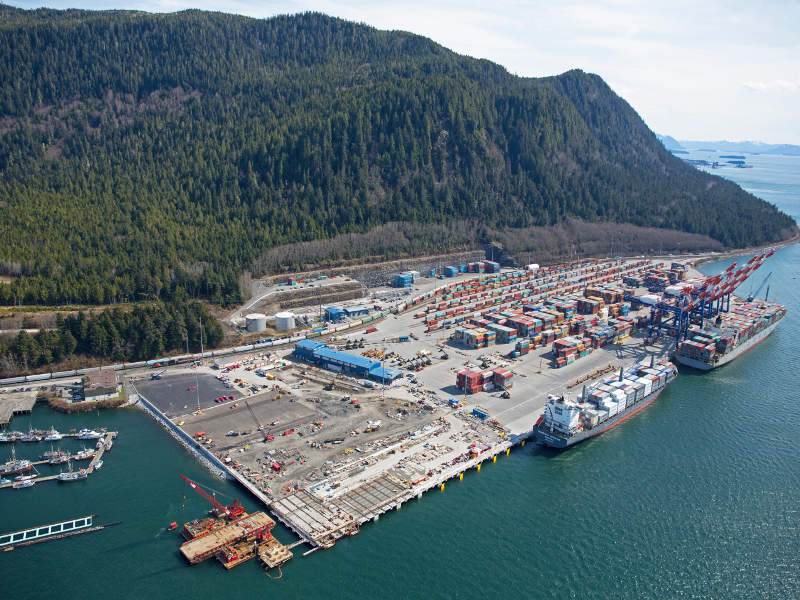Fairview container terminal, located in Prince Rupert on the West Coast of British Columbia, Canada, is currently undergoing a major expansion. The terminal is operated by DP World Canada.
The proposed terminal expansion will accommodate the increasing container volumes and cater the growing demand of North American trans-Pacific trade. Designed to serve for 50 years, the expansion will increase the terminal’s container holding capacity to 1.8 million twenty-foot equivalent units (TEUs) a year.
Construction of the Fairview terminal phase 2A expansion was initiated in 2015 and completed in August 2017. The phase 2B expansion will begin in mid-2019 and is scheduled for completion in 2022.
Fairview container terminal background and purpose of expansion
Fairview terminal was originally constructed in 1972 as a break-bulk cargo terminal and was later expanded by approximately 100m in 1989. The general cargo terminal was converted into a container terminal with an annual handling capacity of 500,000TEU in October 2007.
Maher Terminals Holding Corporation managed the terminal operations until the rights of the terminal operations were purchased by DP World Canada in 2015.
Located in close proximity to Asia, the terminal has rail and road connectivity with all North American locations.
Phase one of the container terminal expansion involved the reconstruction and reconfiguration of the 24ha terminal and widening a 360m segment of the existing wharf by 20m.
The expansion will reduce congestion at the existing west coast ports and create economic opportunities for importers and exporters in Canada.
Fairview terminal northern expansion details
Phase 2A expanded the terminal’s annual throughput capacity from 850,000 to 1.35 million TEUs. It also added a second vessel berth, which is served by three new big ship-ready Malacca-max cranes.
The northern berth was extended by 155m in length and 40m in width, and the seabed was dredged to ensure sufficient depth at the berth.
The terminal was expanded by 11ha to increase the speed of services, while the on-dock rail space was extended by 6,000ft. The $200m phase 2A expansion created more than 200 new jobs.
Fairview terminal southern expansion details
Phase 2B expansion will involve the extension of container yard from 32ha to 41ha and addition of two rubber-tired gantry (RTG) cranes and an eighth dock gantry crane.
Preliminary construction work involves site grading and excavation of approximately 245,000m³ of rock. In-filling will be carried out behind the containment berm for the new terminal area, while caissons will be installed and the topside of the wharf will be constructed.
The southern expansion will also include the construction of container and intermodal yard facilities, stormwater management and site drainage features. The wharf will include both waterside and landside crane beams supported by the steel piles.
Phase 2B expansion will include the construction of eight concrete caissons each measuring 47.4m-long, 21.5m-wide and 21.5m-tall. It will also include one transition caisson for the expansion of southern wharf.
It will also involve the construction of rail maintenance / south amenities building, RTG maintenance building, wharf amenities building and Canada Border Services Agency (CBSA) office.
The terminal will be installed with high mast lighting and power for the expanded terminal will be provided from a 69kV substation. Cold ironing facilities will provide shore-based power to vessels while at berth.
Contractors involved with Fairview container terminal expansion
Cullen Grummitt & Roe (CGR) was contracted to design the master plan and deliver site supervision and project management services for the phase two north terminal expansion.
Bear Creek Group was awarded a subcontract for the cut-and-fill rock excavation works. Hemmera provided services, including impact assessment, mitigation planning and offsetting design.
Stantec was responsible for providing preliminary design drawings, estimation of capital budget cost, project schedules, risk management strategies, and geotechnical investigation programme.
Allnorth conducted the materials testing, quality control for the production and placement of aggregates, concrete and asphalts. It also developed the quality control plan for materials testing.
BEL Contracting and Fraser River Pile & Dredge carried out the construction works of the terminal’s northern expansion.




